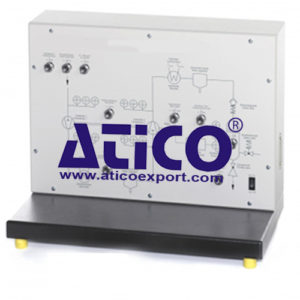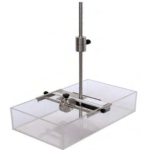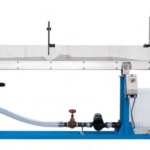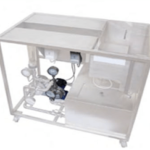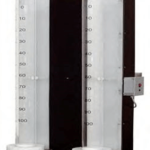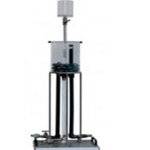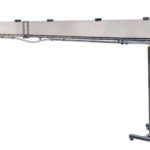When operating real compressor plants in industry, the specified process parameters must be adhered to. Certain operating conditions must be avoided in order to prevent damage to the plant.
The experimental unit is a simulation device which students can use to safely familiarise themselves with the different operating states of a two-stage compressor plant. Boundary conditions and their consequences can be simulated. The significance of clearance volume and re-expansion are demonstrated. The plant’s response can be tested by deliberately changing the process parameters.
Nine different process parameters can be set via potentiometers on the control unit of the experimental unit. The process parameters control the software. The process parameters include, among other things, cubic capacity, clearance volume, speed or intake state of the air.
Learning Objectives And Experiments
- Fundamentals of the multi-stage compression process
- Characteristics of a multi-stage compressor
- Thermodynamic state variables
- Representation of the compression process in the T-s diagram and in the p-V diagram
- Condensation in the intercooler and aftercooler
- 2-point pressure control with hysteresis
Features
- Simulated compressor plant with intermediate and aftercooling
Specification
- Simulated operation of a two-stage compressor plant with intermediate and aftercooling
- Change 9 system parameters via potentiometers
- Software calculates: intake air volume, temperatures, pressures, pressure ratio stage 1+2, convective heat transfer during condensation, delivered air volume
Technical Specification
- 9 potentiometers for setting
- Intake pressure: 0…2bar abs.
- Intake temperature: 0…100°C
- Relative air humidity: 0…100%
- Coolant mass flow: 0…100kg/h at 15°C
- Flow control valve position: 0…100%
- Tank nominal pressure: 0…50bar
- Motor speed: 0…1000min-1
- Tank volume: 0…1000L
- Relative clearance volume: 0…100%
- Inputs and outputs
- 16x analogue in, 1x analogue out
- Each 4x digital in/out

